Structure of Cell Membranes (A-level Biology)
Structure of Cell Membranes
Overview of the Cell Membrane Structure
- Cell membranes are made of phospholipids. As you may recall, phospholipids are the main components of all cellular membranes. A phospholipid molecule has one hydrophilic (water-loving) polar phosphate head and two hydrophobic (water-hating) non-polar fatty acid tails.
- The phospholipids form a bilayer. Cells have an aqueous solution both outside (extracellular fluid) and inside (cytoplasm). Therefore:
-
-
-
- The hydrophilic heads of the phospholipid face the external environment on the outside, and the cytoplasm on the inside.
-
-
-
-
-
- The hydrophobic tails are folded into the membrane, protected from water.
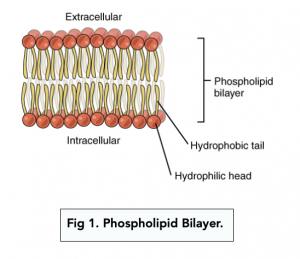
A-level Biology – Structure of Cell Membranes
- The hydrophobic tails are folded into the membrane, protected from water.
-
-
Fluid Mosaic Model
The fluid mosaic model describes cell membrane structure. Before this theory was developed, scientists thought that the cell membrane was static, meaning that it did not move. However, research has shown that cell membranes are actually fluid:
- Fluid. The phospholipids are responsible for the fluidity since they themselves are constantly moving around the cell/organelle.
- Mosaic. Proteins and other molecules (e.g. cholesterol) are embedded within the cell membranes (See table below).
Fluidity of Proteins
- Proteins can be fluid or stationary. While the cellular membrane itself is fluid in its nature, proteins in the membrane can either be fluid or stationary.
- Fluid proteins are present all around the cell. Fluid proteins are proteins that are typically needed at all points of the circumference of the cell. They can move sideways across the bilayer.
- Stationary proteins are anchored to a particular position. Stationary proteins are anchored into a particular location where it will serve its purpose. This is often the case with many types of receptor proteins and transport proteins.
Major Components of Cell Membranes
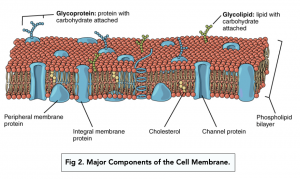
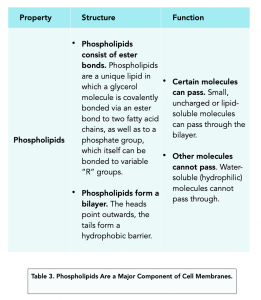
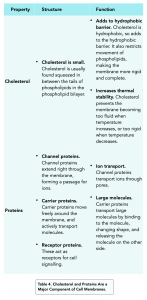
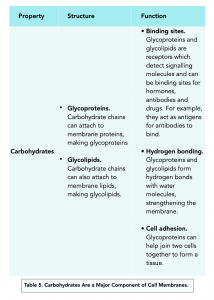





Still got a question? Leave a comment
Leave a comment